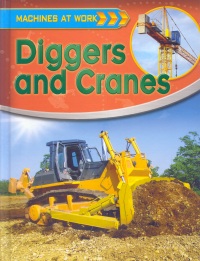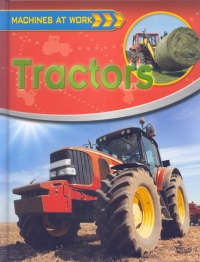| ________________
CM . . .
. Volume XIX Number 34. . . .May 3, 2013
excerpt:
Now numbering six titles, the “Machines at Work” series explains to young readers the basics of how various types of vehicles and machines and their specialized parts work. Bright, colourful covers will attract readers, and the vibrant colour photographs will sustain the reader’s interest, perhaps even more so than will the text. Each title is comprised of 10 short chapters (double-page spreads) and a brief multiple choice quiz as well as a table of contents, a glossary, an index, and a short list of related books and web sites for further study. The text provides information about the parts of the featured machine in simple language that is appropriate to the target audience. A “Fast Facts” text circle adds interesting trivia while a “Zoom In” text box focuses on a specific component of the machine. Cars is, perhaps, the weakest of the three titles reviewed, primarily because much of the text explains facts that readers already know, some examples of which are that a driver starts the engine with a key, turning the steering wheel to the left will point the wheels to the left, windshield wipers remove rain from the windshield, and that police cars are equipped with flashing lights and a siren to warn drivers and pedestrians to move out of the way. Other facts presented in the text are quite interesting, including, for instance, that race car tires are wrapped in heated blankets to keep them warm so that they grip the track better. Almost all of the vehicles featured in this title are race cars, the exceptions being a small electric powered car highlighted in the chapter about alternative fuels, and the cars used in the testing lab to study the effects of collisions on cars and drivers. Diggers and Cranes focuses on large machines that move heavy loads at building sites, farms, mines, beaches, roads, docks and oil rigs. This title not only explains the type of work that each of the machines does, but it also discusses the specialized parts and their purpose. Machines featured in this title include bulldozers, excavators, tunnel boring machines, and several kinds of cranes (moving, container, straddle carrier and tower). In Diggers and Cranes, readers will learn how big machines are used in demolition, leveling beaches and construction sites, and carving out underground tunnels, to name a few uses, and they will also find out why yellow is the preferred colour choice for these behemoths. Though the text is more technical than that of Cars, it is still easy enough for the target audience to comprehend. Finally, Tractors will show readers that tractors are very versatile pieces of machinery, not only for use on the farm, but also in the city. Powerful engines and large, chunky-treaded tires help tractors to perform a variety of tasks, such as towing farm equipment, pulling out tree stumps, hauling stuck vehicles out of mud or water and clearing snow. With special hitches and attachments, tractors become multi-functional, able to plant seeds and potatoes, spray chemicals on crops, plow fields, mow and bale hay, harvest and load crops, and remove rocks and soil. As readers learn about the different jobs that tractors perform, they will also learn about other types of farm equipment, including plows, harrows, seed drills, hay mowers and balers, combine harvesters and grain augers. Other topics in this title include the parts of a tractor and the various controls which make tractors move in specific ways. Boys, especially, will be drawn to this series, which provides just enough information without overwhelming young readers. Recommended. Gail Hamilton is a former teacher-librarian in Winnipeg, MB.
To comment
on this title or this review, send mail to cm@umanitoba.ca.
Copyright © the Manitoba Library Association. Reproduction for personal
use is permitted only if this copyright notice is maintained. Any
other reproduction is prohibited without permission.
NEXT REVIEW |
TABLE OF CONTENTS FOR THIS ISSUE
- May 3, 2013.
AUTHORS |
TITLES |
MEDIA REVIEWS |
PROFILES |
BACK ISSUES |
SEARCH |
CMARCHIVE |
HOME |


